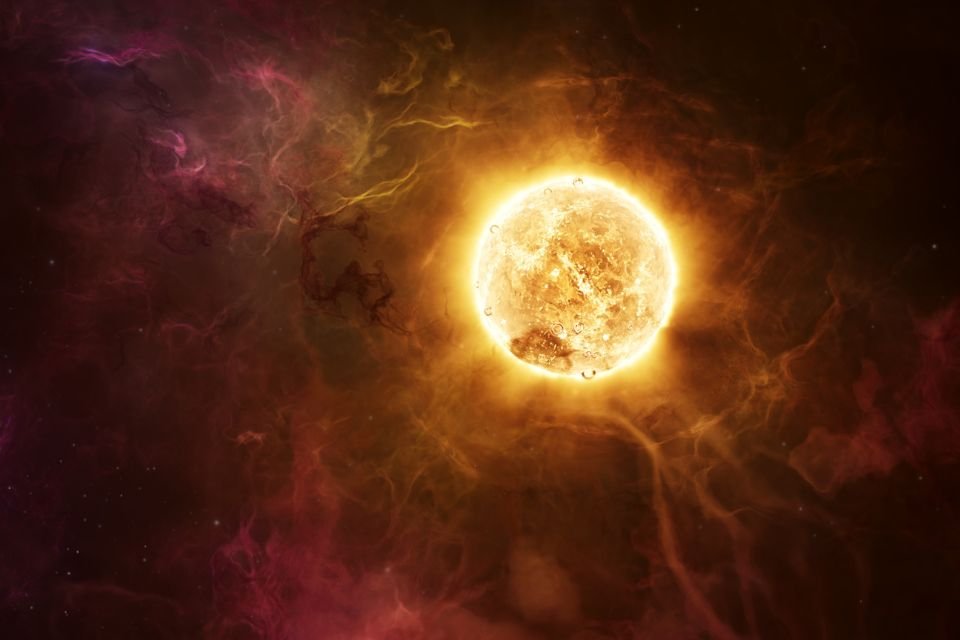During the night of February 21 to February 22, two powerful solar flares were captured by space and terrestrial instruments, which were followed by a class X1.8 flare and a class X1 explosion at 19:07 (Brasília time) on the 21st. classified as. 7, 2:32 am on the 22nd. If we are considered the strongest events occurring on our star, they can also affect the Earth.
The European Space Agency (ESA) made the following statement on its website: “This explosion was not associated with ‘Energetic Solar Particles’ (ESP) or ‘Coronal Mass Ejection’ (CME)”. However, on the 23rd, the US National Oceanic and Atmospheric Administration (NOAA) issued an alert for solar radio emission, a type of electromagnetic radiation produced by electron acceleration processes in the Sun’s corona.
On the morning of the 22nd, widespread cell phone outages from AT&T, Verizon, and T-Mobile began to occur in various parts of the United States, blocking calls and text messages. But the incident, which affected 70,000 users at its peak, was not explicitly attributed to explosions, especially after AT&T realized the problem was caused by software issues. Reuters.
Warning in the USA: What happens during a solar flare?
Solar flares begin when charged particles in the “hot soup” that makes up the Sun’s plasma collide, creating intense invisible magnetic field lines that intersect and intertwine with each other. These fields produce enormous amounts of energy when suddenly rearranged in active regions of the Sun, where the magnetic field is stronger and more complex.
This massive release of energy heats the plasma to millions of degrees Celsius and accelerates the particles further, producing electromagnetic radiation. So this is not a physical explosion in the traditional sense, propagating through space like a shock wave. but a real “bombardment” of X-rays, gamma rays, ultraviolet radiation, radio waves and eventually charged particlesIt moves almost at the speed of light.
These “flares” as they are called in English, mostly class X explosions, are extremely powerful. The 1859 Carrington Event, the most powerful event ever observed, may have released energy equivalent to a ten billion megaton TNT explosion. The coronal mass ejection (CME), which took four days to reach Earth, took 17 hours to reach the Earth, bringing chaos to the telegraph systems of Europe and the USA.
Should we be worried about solar flares?
It should be noted clearly that most solar flares that occur are nowhere near the magnitude of the Carrrington that causes aurorae (yes, those green northern lights) in various parts of the world. But even the little ones It could bring dangerous plasma clouds (CMEs) to Earth that surround us and have the potential to disrupt electronics. However, these are usually mild inconveniences that do not have a major impact on our lives.
As for the possible impact of these explosions and magnetic particles on our body, there is no such impact as long as we are on the Earth’s surface and therefore protected by our strong magnetosphere., The force field that has protected us and all life on Earth for billions of years since the emergence of our planet and the Sun.
Logically, These very high-energy particles, such as those brought in ultra-fast by CMEs, can be very dangerous, even lethal.For people conducting missions to the Moon or Mars, for example. Because they can cause radiation poisoning.
But in some places, like the United States and Europe, people are afraid of what might happen, as in the case of a TikToker who posted content on @Californices. Check out:
@californices? original sound – California
Do solar storms pose any risks to our technologies?
Rapid Fire X-class flares from Area 3590! An X1.9 followed by an X1.7, both causing the short-lived R3 level #Radio Blackouts. Ongoing radio and #GPS/#GNSS Australia, Indonesia, India and East Africa are now experiencing outages (see colored areas on map). Airmen check ICAO alerts! pic.twitter.com/b3EEcvH5Ta
—Dr. Tamitha Skov (@TamithaSkov) February 22, 2024
When a CME reaches Earth’s atmosphere, it disrupts our magnetic field and creates what we call a geomagnetic storm. However, unless bright auroras occur, its effects are unlikely to be noticed by humans, because our magnetic field is weaker in the polar regions, charged particles from the Sun collide with atoms and molecules in the Earth’s atmosphere.
The feared effects on technological equipment were moderate even in the violent explosions that had already occurred. According to Sean Elvidge, head of space environmental research at the University of Birmingham in the UK: “I can’t think of any possible impact from consumer electronics.”said scientific american.
Threats to power grids and widespread power outages, another threat constantly mentioned in magnetic storms, are unlikely. Space weather consultant Erika Palmerio, a heliophysicist at Predictive Science, illustrates this: It’s like your computer gets hit by a powerful particle and gets fried. “But frankly the odds are very low,” he says scientific american.
Is it possible to predict and prepare for solar storms?

To predict new solar flares and help the electric power industry prepare to mitigate their impacts, NOAA-operated Geostationary Operational Environmental Satellites (GOES) continuously monitor the Sun. When a solar storm occurs that has the potential to impact the Earth, these operators detect it because In this case, the event occurs on the side of the Sun facing our planet.
When this happens, they notify power grid engineers so they can adopt mitigation strategies, such as reducing power generation to protect transformers or making more backup equipment available.
For example, CMEs, it’s easier to guess and it takes several days for the plasma bubble to reach Earth. Therefore, it is possible for satellites to briefly shut down their systems before arriving to stay safe. Likewise, electricity companies will be able to reconfigure their networks with extra grounding, with the possibility of being warned in advance. And such!
Did you like the content? So follow TecMundo and keep up to date on this and other topics. To the next one!
Source: Tec Mundo
I’m Blaine Morgan, an experienced journalist and writer with over 8 years of experience in the tech industry. My expertise lies in writing about technology news and trends, covering everything from cutting-edge gadgets to emerging software developments. I’ve written for several leading publications including Gadget Onus where I am an author.












